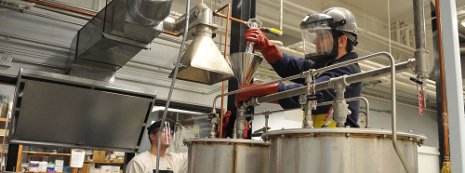Much‐needed tools to reduce the experimental burden for determining the gas flammability parameters, Pmax and KG
© 2019 American Institute of Chemical Engineers. Publisher's version of record: https://doi.org/10.1002/prs.12061
Abstract
This article provides much‐needed analytical tools to reduce the experimental burden for determining the maximum pressure for flammable gas combustion, Pmax, and the deflagration index, KG, as a function of the gas concentration. Both of these parameters are important for risk assessment, process design, and design of preventive and mitigative safeguards. A very large experimental database for hydrogen/oxygen/nitrogen mixtures in a 20 L spherical vessel was used to validate the tools for Pmax and KG. The first tool considered was an equilibrium code to estimate the maximum combustion pressure, Pmax. The calculated equilibrium pressure agreed very well with the experimental pressures in a broad range around the stoichiometric concentration. An increasing difference occurred as the concentration approached the flammable limits. This result is consistent with homogeneous and complete combustion near the stoichiometric concentration and upward partial combustion near the flammable limits. The ratio of these two pressures is likely representative of the total volume combusted. The second tool was the application of a commercial computer program, TableCurve 2D, to fit experimental data for Pmax and KG. A set of simple empirical equations were identified to estimate Pmax and KG using just a few experimental data points. Methods of application are presented. Reliable experimental data is always preferred, but these tools should help reduce the experimental data burden.

